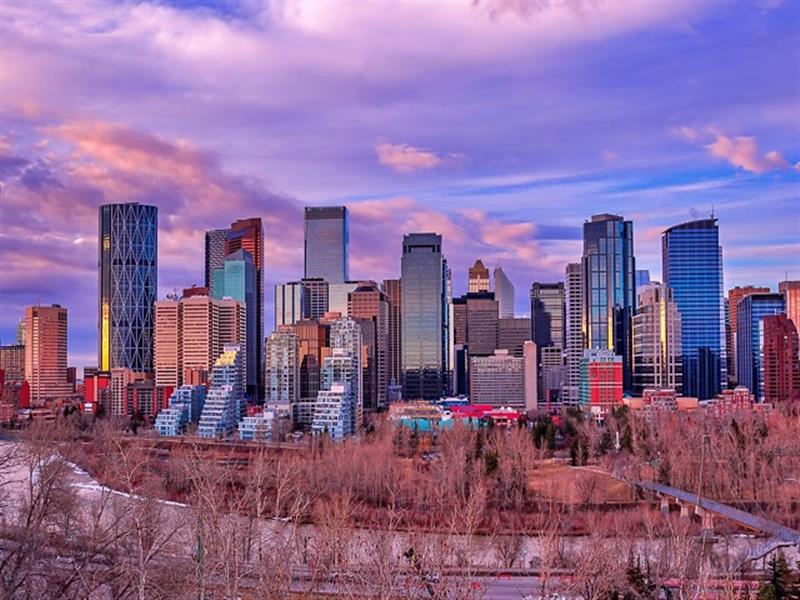
Although southwest Calgary is a desirable place to invest, picking the ideal site involves a combination of market study, planning for the future, and research. Investors can find the finest high-growth real estate investment locations by concentrating on factors like economic growth, infrastructure advancements, lifestyle amenities, and rental demand.
Location is crucial when it comes to real estate investing, and Southwest Calgary is a particularly attractive area for high-growth prospects. This region has a lot of potential for investors because of its mix of well-established communities, current construction, and solid economic foundation. However, how can you identify the ideal sites for the highest returns? This is a guide of Southwest Calgary's high-growth areas.
1. Analyze Population and Economic Growth
A growing population and a thriving economy are key indicators of a high-growth real estate market. Look for neighborhoods where population numbers are rising, driven by new job opportunities, infrastructure projects, and lifestyle appeal. The City of Calgary provides population growth data that can help investors track trends over time.
Key Indicators:
- Population growth rates from the City of Calgary census
- New business openings and commercial developments
- Unemployment rate and job market trends
2. Identify Upcoming Infrastructure and Development Projects
Areas with planned or ongoing infrastructure projects tend to see increased property values. Southwest Calgary has seen significant investments in transportation, schools, and commercial developments that enhance livability and drive demand.
Key Developments to Watch:
- Ring Road Expansion (Southwest Calgary Ring Road - SWCRR): This project improves accessibility, reducing commute times and increasing property values in surrounding communities.
- Green Line LRT Expansion: Future LRT development can create high-demand transit-oriented communities.
- Mixed-Use Developments: Projects like West District by Truman Homes are reshaping the real estate landscape with modern retail, office spaces, and residential buildings.
3. Assess Real Estate Trends and Property Values
Analyzing historical price trends and recent sales data can reveal where property values are increasing. Southwest Calgary offers a variety of housing options, from luxury homes to affordable condos, making it essential to understand which segments are experiencing the highest appreciation.
How to Research:
- Review recent sales reports from the Calgary Real Estate Board (CREB)
- Compare median home prices over the last 5-10 years
- Check rental yields and vacancy rates in different communities
4. Look for Lifestyle and Amenities
Homebuyers and renters are drawn to areas that offer a high quality of life. Neighborhoods with parks, schools, shopping centers, and recreational facilities tend to attract long-term residents.
High-Growth Neighborhoods with Strong Amenities:
- West Springs & Aspen Woods: Known for luxury homes, excellent schools, and proximity to the mountains.
- Currie Barracks: A redeveloped military base offering modern living with a mix of townhomes, condos, and single-family houses.
- Marda Loop: A trendy inner-city area with boutique shopping, restaurants, and easy downtown access.
- Signal Hill & Glenbrook: Established areas with strong rental demand due to their shopping centers and connectivity.
5. Evaluate Rental Market Demand
If your investment strategy includes rental income, check rental demand and average yields in different communities. Look for areas with low vacancy rates and increasing rental prices.
Rental Market Indicators:
- Demand for rental units (based on listings and occupancy rates)
- Rental price trends over the past few years
- Proximity to universities, employment hubs, and transit
6. Seek Advice from Local Experts
Real estate agents, property managers, and market analysts who specialize in Southwest Calgary can provide valuable insights into emerging high-growth areas. Networking with local investors and attending real estate events can also help you make informed decisions.
Who to Contact?
- Real Estate Agents & Brokers – Specialists in the Calgary market can help identify high-growth neighborhoods with strong appreciation potential.
- Property Managers – They have firsthand knowledge of rental demand, tenant preferences, and vacancy rates.
- Real Estate Investors & Networking Groups – Joining investor meetups, such as the Calgary Real Estate Investors Club (CREIC), can provide inside information.
- City Planners & Developers – The City of Calgary’s development office and local builders can offer insights into upcoming infrastructure projects.
7. Check the Absorption Rate and New Housing Supply
Understanding the balance between supply and demand is critical. If an area has too many new housing developments but not enough buyers or renters, prices may stagnate. Conversely, areas with low inventory and high demand tend to appreciate faster.
How to Analyze:
- Check the absorption rate (the rate at which new homes are sold or rented).
- Look for areas where new developments are selling out quickly.
- Avoid neighborhoods with an oversupply of properties, which could lead to price drops.
8. Monitor School Ratings and Education Infrastructure
Families often prioritize top-rated schools, making school catchment areas prime locations for real estate investment. Homes near well-ranked schools tend to appreciate faster and maintain strong resale value.
Key School Zones to Watch:
- Webber Academy & Rundle College (Private Schools)
- Ernest Manning High School (Public)
- Strathcona-Tweedsmuir School (Prestigious K-12)
- Use school ranking reports from Fraser Institute to identify sought-after school districts.
9. Assess Crime Rates and Safety
Buyers and renters prefer safer neighborhoods, making crime rates an important factor. Southwest Calgary has some of the city’s safest communities, but it’s still worth reviewing crime statistics before investing.
How to Check:
- Visit the Calgary Police Service crime map.
- Look for areas with consistently low crime rates.
- Neighborhoods with strong community engagement tend to have better long-term appreciation.
10. Explore Gentrification and Redevelopment Potential
Older communities undergoing revitalization often present great investment opportunities. These areas typically experience rising home values as new businesses, infrastructure, and modern housing developments emerge.
Examples of Gentrifying Areas:
- Bankview & South Calgary – Close to downtown with modern infill developments.
- Currie Barracks – Former military land turned into a master-planned urban community.
- Glenbrook & Killarney – Older homes being replaced with luxury duplexes and infills.